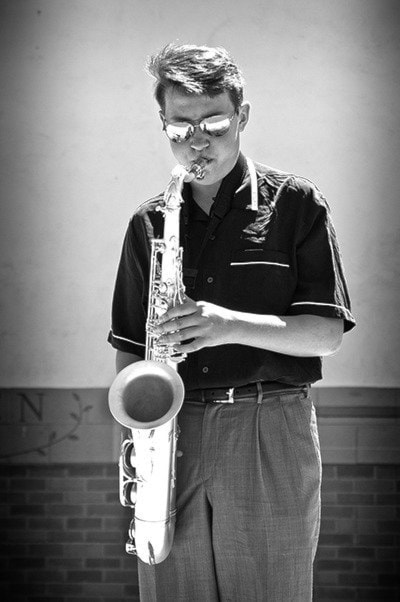One of the fun things I like about photography is the endless conversations I get to have with both long time and beginning photographers, as they explore and re-explore this exciting medium.
Last week I talked to photographers that wondered if reverting back to film would help them become more creative. And in the past few days more than one person has stopped by wanting to talk about converting their images to black and white.
When I started out with photography I spent most of my time shooting with B&W. I studied Ansel Adams’ books on his zone system, and Richard Zakia’s writings on tone control, and I read or looked at everything I could find to understand black and white photography and printmaking.
I began to understand exposure as of shades of grey, and got used to thinking about the subjects I photographed in tonal values instead of only bright colours.
I remember a trick that one of my photography instructor’s suggested for those students that had trouble “seeing” contrast. He said we should “squint down to f/16 when we looked a subject”.
I expect other students on campus wondered about the camera-toting students squinting up at the college’s clock tower after class.
I learned to previsualize, and as I selected my subject I would think about how I would process the film and make the final print.
I might adjust the exposure rating and developing, as with the Zone system, and select different papers and alternate chemicals to change contrast or tonal values in the final print. Nowadays I do the same, but think about what I will need to do to enhance my image file with Photoshop.
Modern cameras capture images in colour, but that doesn’t mean we can’t previsualize the outcome; and converting a RAW colour file is really easy with programs like Photoshop, and my favourite, Silver EFex Pro. Converting that image to B&W stretches our creativity and forces us to visualize our world in different terms.
A black and white image is a matter for the eye of the beholder, the intuition, and finally the intellect.
Of course colour is all that, but much of the time it seems photographers, overwhelmed by colour, just push the shutter seeing nothing deeper in a scene than the colours.
A black and white photograph depends on its ability to communicate; it doesn’t need to rely on eye-catching colours for its visual presentation.
Black and white images don’t attract with a play of colours. To me they are subtle and make viewers think about the picture. The B&W image demands close attention to composition, lighting, perspective, and the context in which the image is shot.
A 1950s photographer named Paul Outerbridge, once said, “In black and white you suggest. In color you state.” And I remember another photographer saying that he believed shooting in B&W refined one’s way of seeing.
I am of the belief that those photographers that are good at black and white photography learn to exploit the differences in tonal elements in a scene and present viewers with successful B&W portrayals that make excellent use of shapes, textures, light and shadow, and the loss of those original colours becomes irrelevant.
For those that haven’t tried B&W image making, converting an image is really easy with programs like Photoshop and Silver.
Readers will find a new way of displaying work. Black and white will have readers visualizing the world in new and creative ways and who knows, like me I expect they will enjoy black and white photography.
These are my thoughts for this week. Contact me at www.enmanscamera.com or emcam@telus.net. Stop by Enman’s Camera at 423 Tranquille Road in Kamloops.
I sell an interesting selection of used photographic equipment. And if you want an experienced photographer please call me at 250-371-3069.
